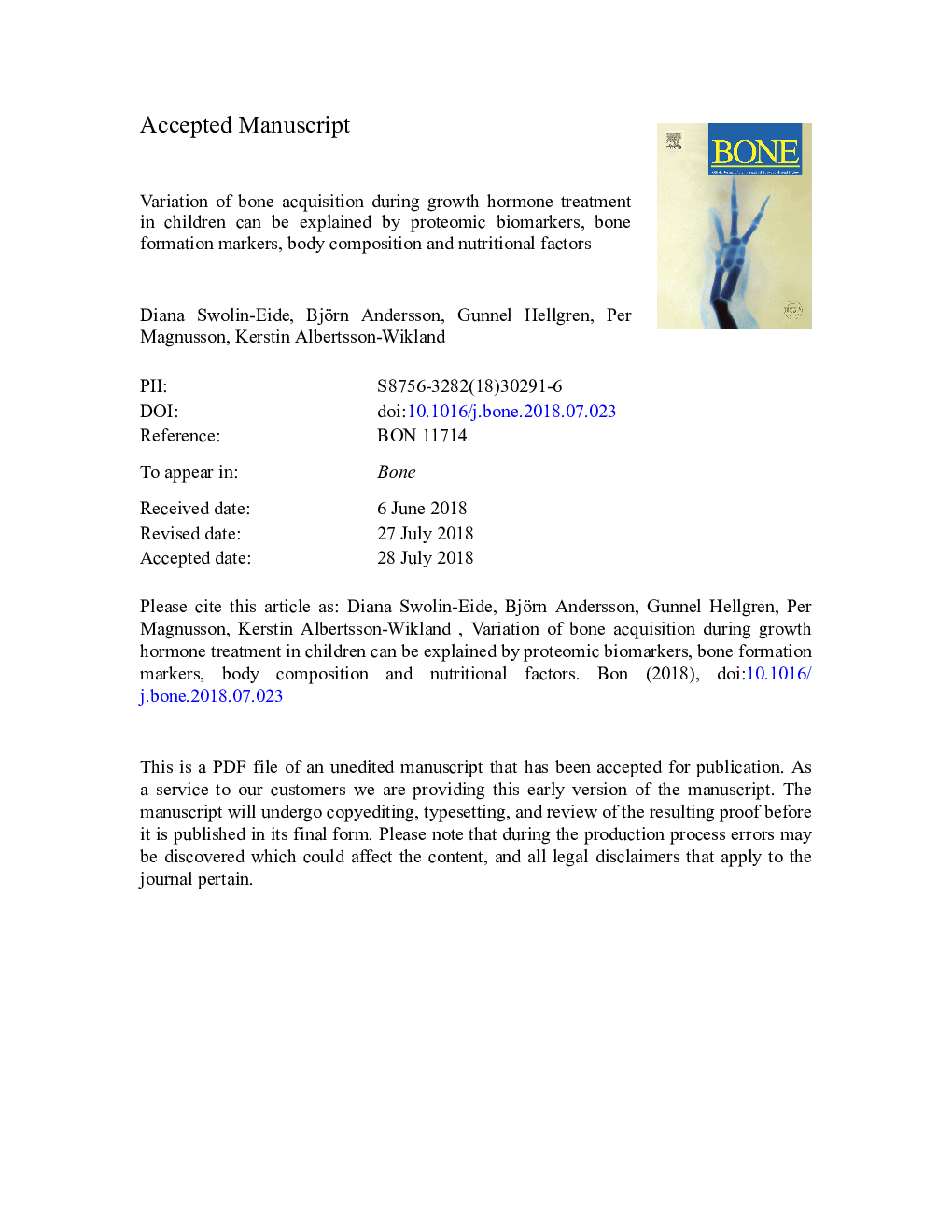| Article ID | Journal | Published Year | Pages | File Type |
|---|---|---|---|---|
| 8624753 | Bone | 2018 | 34 Pages |
Abstract
For total BMC, as much as 80% of the variation during the first year of GH treatment could be explained by proteomic biomarkers, body fat, nutrition and bone formation markers, whereas for height-adjusted BMC 57% could be explained. The inclusion of information about either body composition (fat/lean mass) or nutritional markers contributed with approximately 20%. The variation in heightSDS gain could be explained to 75%. Hence, information of fat or nutrition markers was needed for explaining the variation in bone acquisition to the same magnitude as explaining the variation in height response.
Keywords
Longitudinal bone growthDXAMPHRIAIGF-IBMDGHDBMCBALPHDLIGF-IIIGFBP3SDSCLIAPINPSELDI-TOF MS25(OH)D25-hydroxyvitamin Dhigh-density lipoproteinLp(a)bone-specific alkaline phosphataseapoapolipoproteinHeightOsteocalcinsurface-enhanced laser desorption/ionization time-of-flight mass spectrometryInsulin-like growth factor-IIchemiluminescence immunoassayBone mineral densityfat massdual-energy X-ray absorptiometryradioimmunoassaybody mass indexBMICoefficient of VariationInsulin-like growth factor-ILipoprotein(a)Low-density lipoproteinLDLBone mineral contentStandard deviation scoreGrowth hormoneInsulin-like growth factor binding protein-3Growth hormone deficiency
Related Topics
Life Sciences
Biochemistry, Genetics and Molecular Biology
Developmental Biology
Authors
Diana Swolin-Eide, Björn Andersson, Gunnel Hellgren, Per Magnusson, Kerstin Albertsson-Wikland,
